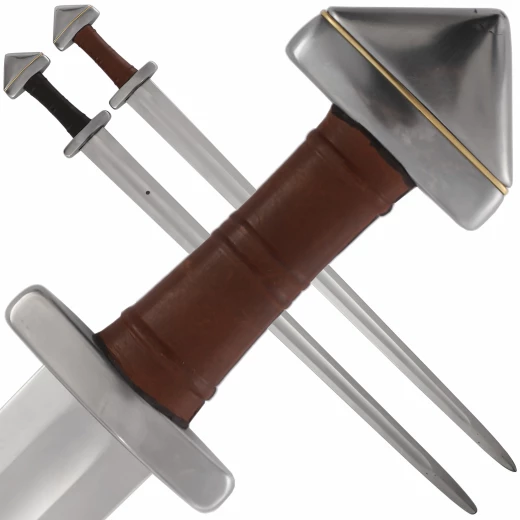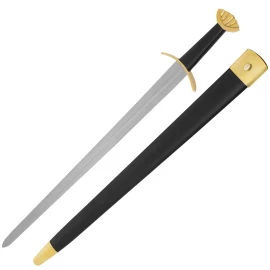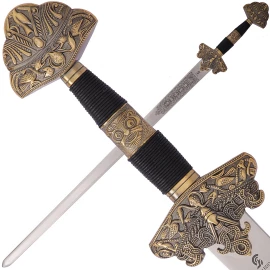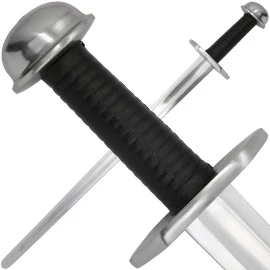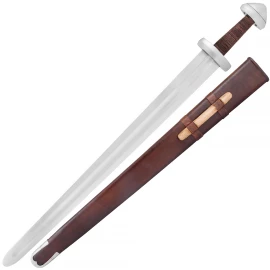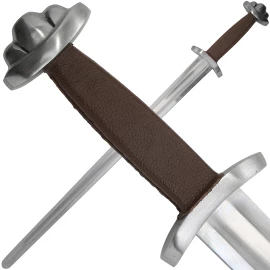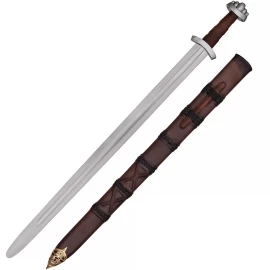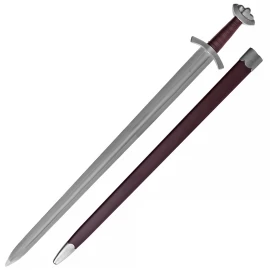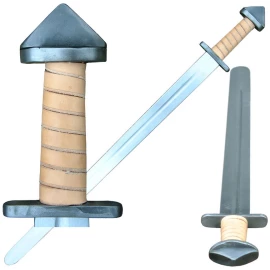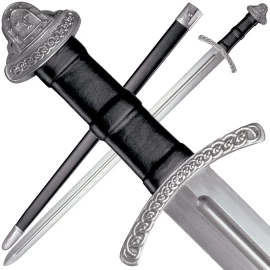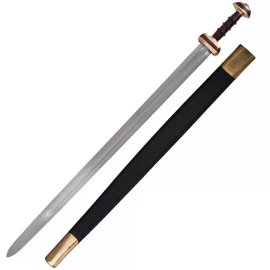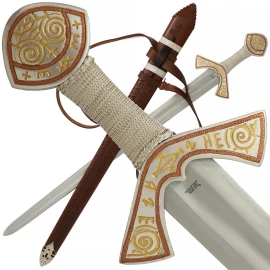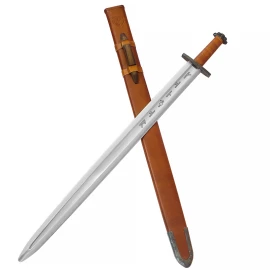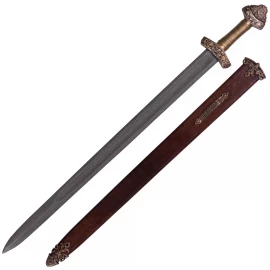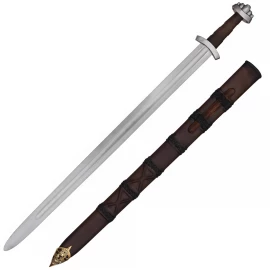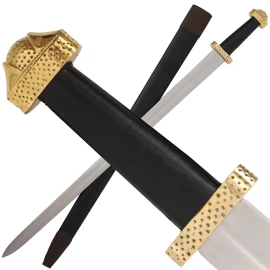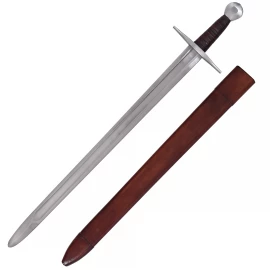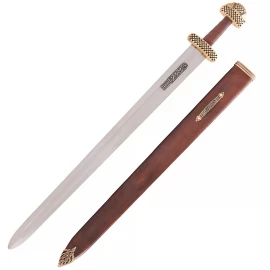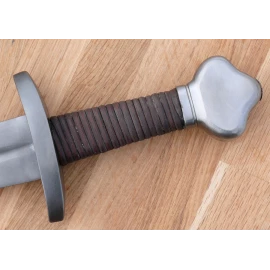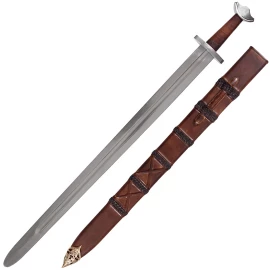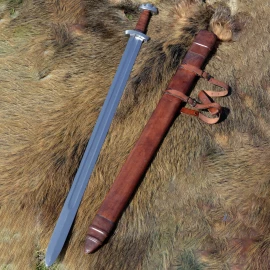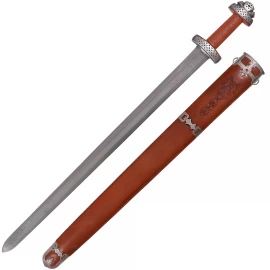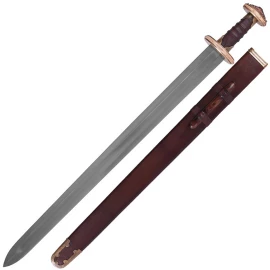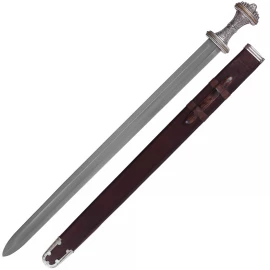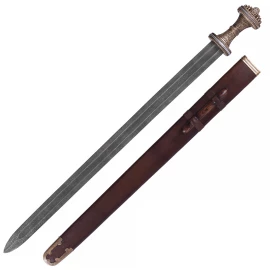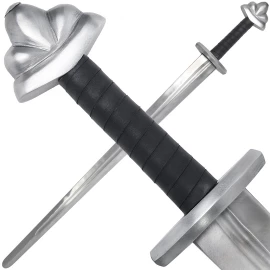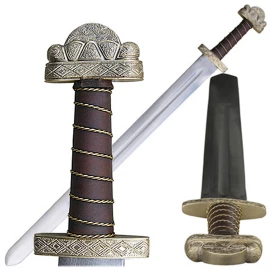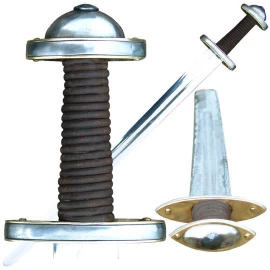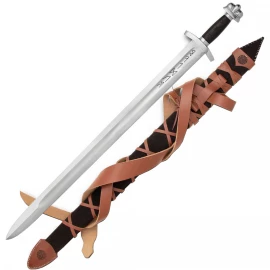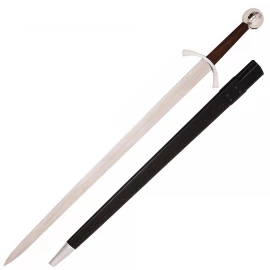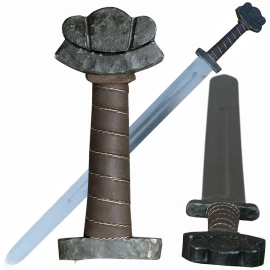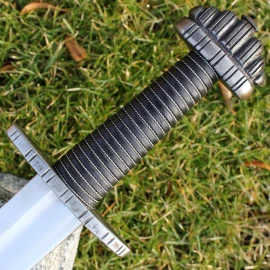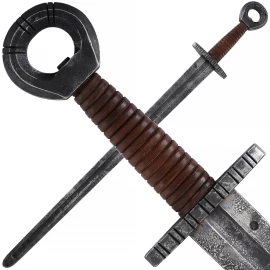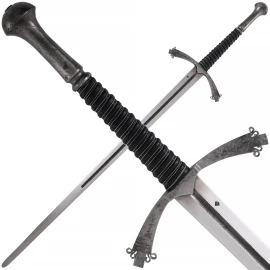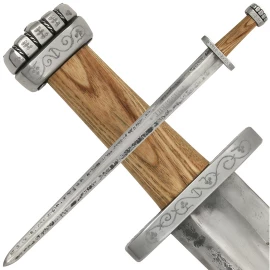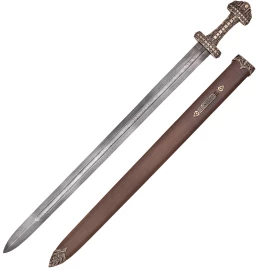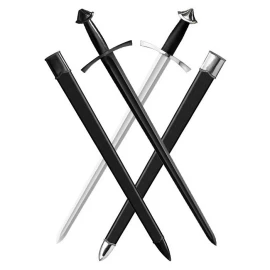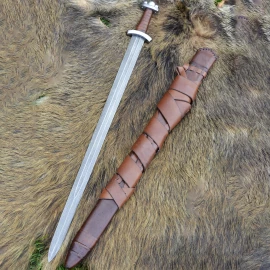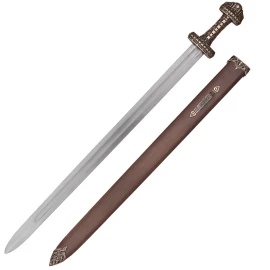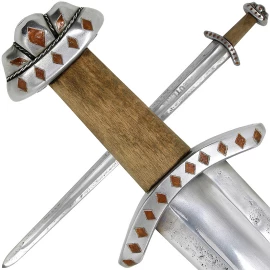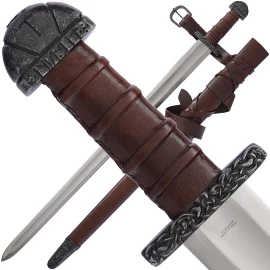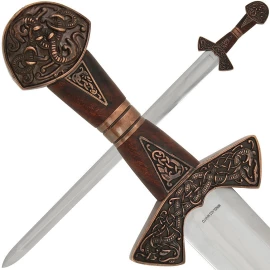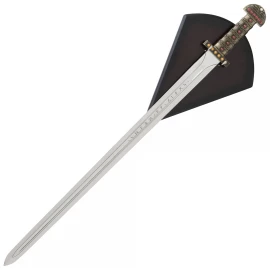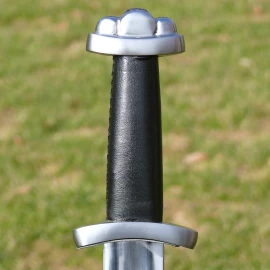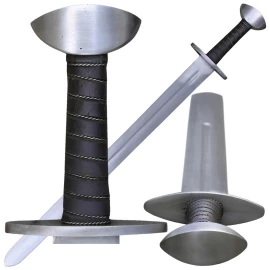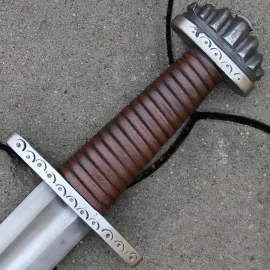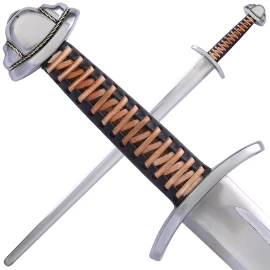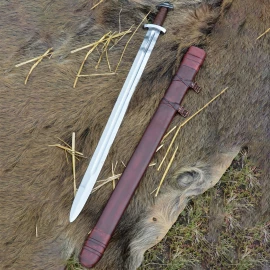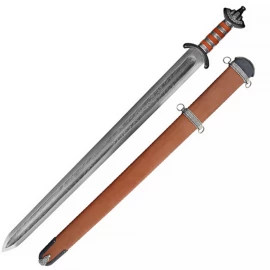Early medieval Viking sword by Pavel Moc
Viking sword with a two-piece pyramid pommel with an inlaid bronze plate. Such a split pommel is more typical of swords from northern regions. The blade of the sword has a wide fuller. On request, it can be ordered with brown or black leather covering of the handle and the sheath. More information...
Early medieval Viking sword by Pavel Moc
- Total length 98.5cm
- Blade length 79.5cm
- The length of the cross-guard is 9.5cm
- Blade width at guard 49.17mm
- Length of the fuller 70.5cm
- Blade width 10cm from tip 27.72mm
- Striking edge thickness: 1.60mm blunt; 0.54mm sharp
- Length of the pommel 5.5cm
- Handle length 11cm
- The center of gravity lies approx. 9.5cm in front of the guard
- Weight: approx. 1466 g blunt; 1363 g sharp
Please note: The specified parameters were measured on the photographed specimen. Due to the extent of manual work, these parameters can vary slightly from piece to piece.
This is one of the best bladed weapons in the Sword class B
This weapon is made by of one of the best swordsmiths in Czechia - Mr. Pavel Moc. His bladed weapons are generally an "artistic license" of historical originals. They are the result of decades-long-experience and discussions with historians, swordsmen and colleagues in the industry. If the replica does not directly correspond to the preserved original, it is based on contemporary iconography, illuminations and its final form is a "well informed stylization".
Steel
The blade is made of spring steel for dynamic strain CSN 14260 (DIN 54SiCr6, GOST 60S2CHA) or CSN 15260 (50CrV4 DIN 1.8159). The steel is heated to 820-860° C and then immersed into oil. The steel is then tempered at 540-680° C according to the prescribed technical standards in computer-controlled-ovens. The first kind of steel has a slightly higher elasticity, the second one can be slightly more hardened. Both types of steel are oil-quenched and tempered to a hardness of 48.5 +/- 2 HRc.
Warranty
This weapon is designed for experienced fencers who prefer light swords with flexible blades and who use rather their head than force in sword combats. The anti-break-warranty for the blade refers only to material defects. The warranty does not cover natural wear of the blade and the grip. The guard is riveted (not soldered) to the blade. It may happen that the rivet connection gets loosened after some time and the sword begins to rattle during combat. This is a sign of wear that does not affect the function of the sword, does not diminish its quality or worsen the safety of the swordsman.
We are here for you


